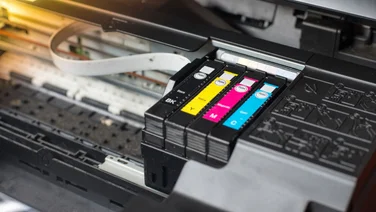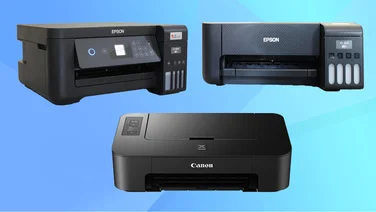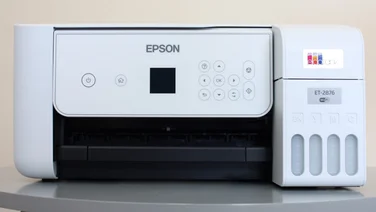To help us provide you with free impartial advice, we may earn a commission if you buy through links on our site. Learn more





The XP-405 may look almost identical to the cheaper Epson Expression Home XP-102, but as well as adding Wi-Fi Epson has also improved some of the MFP’s key specifications, most notably upping the scan resolution to 1,200×2,400dpi and improving the print speeds to a claimed 8.7ipm in mono and 4.5ipm in colour.

While not exactly flashy, the XP-405 isn’t as basic as the XP-102. It comes with a colour display with touch-sensitive controls, and memory card slots that allow for direct photo printing. It’s not a full touchscreen but is still a simple enough system to use, with the exception that all the touch-sensitive controls are lit up in the same orange colour, which makes it less easy to recognise start and cancel icons that might be more usefully coloured green and red. The control panel is hinged at the top and can be used either vertically flat against the printer, or extended upwards by about 40 degrees.

The First time setup guides you through fitting cartridges and network connection, after which you can add drivers only to your other PCs
This MFP uses Epson’s new Claria Home ink cartridges. Even when using the 450-page XL sizes, however, overall running costs work out at 9.6p per page, which isn’t especially competitive for this class of device. While it’s easy to fit this printer’s ink, we noticed in use that it made a faint, very high-pitched sucking noise that could be irritating to some users. This stepped up several notches in volume as the printer undertook housekeeping for a few seconds immediately after a job, to the extent that we wondered if it might be uncomfortable for hearing-aid users.

It’s immediately apparent that this is a faster MFP than the cheaper XP-102. Print speeds were markedly quicker, with 10×8″ photos completing in about five minutes each, and text reaching 8.3ppm at the default print setting. At 2.3ppm colour prints were still slow, however. Although the scanner wasn’t fast, taking 15 seconds to preview a side of A4, it captured sharply-focused images with accurate colours, preserving fine details from the darkest and lightest areas of the original.

There’s no automatic duplexing, but the driver’s manual guidance is at least helpful
Although photocopies didn’t display the fuzziness we saw when testing the XP-102, colour copies from the XP-405 did exhibit the same slightly seasick colour cast. We were satisfied with its photo prints, which exhibited a small but acceptable amount of grain, and quite impressed with graphical prints on plain paper, which had strong and accurate colours with little visible grain or banding.
Unfortunately text was disappointing, with the draft setting resulting in faint and blocky characters, and the default setting producing slightly sketchy outlines and subtle horizontal tearing on a couple of lines.
Despite the underwhelming text quality, this isn’t a bad MFP. In particular, it’s worth noting that it seemed impervious to the poor Wi-Fi performance that plagued some of the competition in our congested test environment. However, it’s about 50 per cent more expensive to buy and run than the Canon PIXMA MG3250. Canon’s MFP does without the colour screen, but as long as you don’t need to make direct photo prints from a memory card it’s a far better choice.






